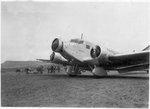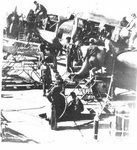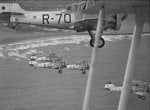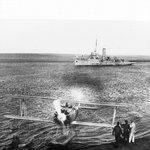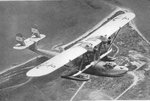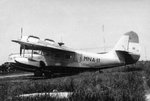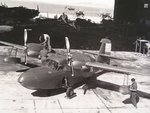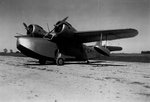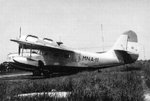Argentina was early in its development of a military air element. First usage of 'air power' took place in 1866 when balloons were used for aerial observation in the Guerra de la Triple Alianza (the war of triple alliance) against Paraguay. In those years the aerial demonstration scene was dominated by European daredevils never finding a big following by Argentineans until Christmas 1907 when the first take off was organised by Argentineans themselves. With a hot air balloon Aarón de Anchorena and Jorge Newbery managed to cross the River Plate to Uruguay, a feat that was never accomplished by Latin Americans before (although Americans had done it in 1887). This spurred aviation interest in Argentina. On 8 January 1908 the Aero Club Argentino was formed by a select group of enthusiasts putting Argentina in the forefront of Latin American aviation development. This led to the first motorised flight on 30 January 1910 (by Italian pilot Ricardo Ponzelli in a 50hp Voisin) and the inauguration of the first airfield on 23 March of the same year at Villa Lugano, Buenos Aires. The military showed increasing interest in aviation and the Aeroclub was tasked to integrate military aviation in the army. Eventually, the Escuela de Aviación Militar (military aviation school) was formed 10 August 1912 (later, in 1954, this became the official 'day of the air force').
El Palomar in the Campo de Mayo military area was adopted as the home base of military aviation. The early days saw a big influence from the Aeroclub, especially engineers Alberto Mascias and Jorge Newbery because the government simply lacked knowledge, funds and equipment. In honour of their achievements they were granted military aviator status before the first class of officers graduated. Jorge Newbery sadly died in a plane crash 1 March 1914, the Aeroparque airport of Buenos Aires is named after him. Involvement of the civil Aeroclub in military Aviation School ended in 1915 when the military was sufficiently trained to organise flight instruction and air operations renaming the school in Escuela Militar de Aviación in the process. The name reverted to Escuela de Aviación Militar again in 1944 and it is still known by that name today.
In 1919 the first Army air service was formed and after inception of the Grupo 1 de Observación in January 1922, the school was initially dissolved into this unit, but was re-instated in January 1925. After years of operating various small aircraft of European origin (Nieuports and Ansaldos for example), 1926 saw the arrival of about thirty Brequet XIV light bombers. Significant progress in Argentinean aviation was also achieved when on 10 October 1927 the Fábrica Militar de Aviones (FMA) was created at Cordoba. FMA started building Avro 504K, Dewoitine D21 and Curtiss 75 aircraft enabling the first international flight to Rio de Janeiro with FMA built aircraft in 1933. The military aviation school eventually relocated to Cordoba as well in 1937 and was re-equipped with the license built FW44J Stieglitz. Shortly after that a military passengers service was created with Ju-52 aircraft that eventually led to the formation of the air transport group in December 1941 at El Palomar. The first state airline was formed shortly after: Líneas Aéreas del Estado (LADE).
As can be read in the general military aviation history part, the flying units were still part of the army in 1940. The quest for independence gained momentum in the forties. A revolution in 1943 brought a lieutenant colonel from the aviation branch to power among others and the formation of the independent air force was imminent. Subsequently, Air Force command was formed 11 February 1944 and the secretary of Aeronautics on 4 January 1945. The air force also adopted its own badges and ranks in the intervening period. Although the structure was in place, much of the necessary infrastructure still needed to be created. Paved runways and both military and civil airfields were introduced and the late forties and early fifties saw an influx of modern aircraft. The Gloster Meteor was the first jet aircraft adopted in any Latin American country. They arrived in 1947 and by December of that year the first unit, Regimiento 4 de Caza Interceptora (4th Fighter-Interceptor regiment) became operational at Tandil. Other typical aircraft of that era were Lincoln bombers and DC-3, 4 and DC-6 transports. Meanwhile the FMA produced some indigenous aircraft designs as well like the Pulqui and Calquin. The forces were no longer concentrated in the Buenos Aires province as other military aviation regions were formed from 15 March 1950 onward. These included six Brigadas Aéreas (I at El Palomar, II at Paraná, III at Reconquista, IV at Mendoza, V at Villa Reynolds and VI at Tandil). Moreover, other commands were formed at staff level further enhancing the professionalism of the fledgling air force. Many of these commands and brigades are still operational today.
The sixties saw the first Antarctic base, Base Aérea Vicecomodoro Marambio, being constructed and the first participation of the Air Force in an UN mission in Congo. This decade marked the last one in which American equipment could be obtained (the F-86 and A-4 for example) easily. The seventies saw some harsh internal struggles that demanded attention of government resources. It also led to the restriction of arms sales to Argentina. The FAA had to rely on indigenous manufactured aircraft from the mid-seventies like the IA-58 Pucara and fighter nonetheless received aircraft from several countries (like Daggers from Israel). Thus slowly but gradually modernising its forces the 1982 Malvinas campaign in which the Falkland Islands were captured from the British could be launched successfully. Although some heroic air-to-air and air-to-ship operations were executed, the Argentinean forces failed to ward off the British forces, which recaptured the islands destroying and capturing various Argentinean air assets in the process.
Aided by befriended countries the FAA reinforced itself again to make up for the encountered losses. Mirage 3C were obtained from Israel, Mirage 5 were provided by Peru. More modern trainers were obtained in Brazil (EMB312 Tucanos) to augment the venerable Beech B45 still performing that job at Cordoba. The Pampa project was started aimed at building an advanced trainer and light attack aircraft to replace the MS760 Paris that was still in service in that role. Due to several circumstances the programme was ill-fated and the Paris had to soldier on. More Tucanos were obtained to make up for the delay in Pampa deliveries as well. With a grim economic situation the prospects were not that good for the FAA in the late eighties and early nineties. Noteworthy light at the end of the tunnel was the arrival of the A-4AR Fightinghawk, an upgraded version of the Skyhawk, in the second halve of the nineties. The subsequent boost in the indigenous aircraft manufacturing plant (effectively taken over by Lockheed) meant another leash of life for the Pampa programme as well. Together with Mirage 5 aircraft brought up to 'Finger' standard, the A-4AR forms the backbone of the current FAA which still has a way to go with regard to force-wide modernisation.
Note: This thread is a remake. I am going to add more information and new pictures, but it will basicly contain all the data provided before.
El Palomar in the Campo de Mayo military area was adopted as the home base of military aviation. The early days saw a big influence from the Aeroclub, especially engineers Alberto Mascias and Jorge Newbery because the government simply lacked knowledge, funds and equipment. In honour of their achievements they were granted military aviator status before the first class of officers graduated. Jorge Newbery sadly died in a plane crash 1 March 1914, the Aeroparque airport of Buenos Aires is named after him. Involvement of the civil Aeroclub in military Aviation School ended in 1915 when the military was sufficiently trained to organise flight instruction and air operations renaming the school in Escuela Militar de Aviación in the process. The name reverted to Escuela de Aviación Militar again in 1944 and it is still known by that name today.
In 1919 the first Army air service was formed and after inception of the Grupo 1 de Observación in January 1922, the school was initially dissolved into this unit, but was re-instated in January 1925. After years of operating various small aircraft of European origin (Nieuports and Ansaldos for example), 1926 saw the arrival of about thirty Brequet XIV light bombers. Significant progress in Argentinean aviation was also achieved when on 10 October 1927 the Fábrica Militar de Aviones (FMA) was created at Cordoba. FMA started building Avro 504K, Dewoitine D21 and Curtiss 75 aircraft enabling the first international flight to Rio de Janeiro with FMA built aircraft in 1933. The military aviation school eventually relocated to Cordoba as well in 1937 and was re-equipped with the license built FW44J Stieglitz. Shortly after that a military passengers service was created with Ju-52 aircraft that eventually led to the formation of the air transport group in December 1941 at El Palomar. The first state airline was formed shortly after: Líneas Aéreas del Estado (LADE).
As can be read in the general military aviation history part, the flying units were still part of the army in 1940. The quest for independence gained momentum in the forties. A revolution in 1943 brought a lieutenant colonel from the aviation branch to power among others and the formation of the independent air force was imminent. Subsequently, Air Force command was formed 11 February 1944 and the secretary of Aeronautics on 4 January 1945. The air force also adopted its own badges and ranks in the intervening period. Although the structure was in place, much of the necessary infrastructure still needed to be created. Paved runways and both military and civil airfields were introduced and the late forties and early fifties saw an influx of modern aircraft. The Gloster Meteor was the first jet aircraft adopted in any Latin American country. They arrived in 1947 and by December of that year the first unit, Regimiento 4 de Caza Interceptora (4th Fighter-Interceptor regiment) became operational at Tandil. Other typical aircraft of that era were Lincoln bombers and DC-3, 4 and DC-6 transports. Meanwhile the FMA produced some indigenous aircraft designs as well like the Pulqui and Calquin. The forces were no longer concentrated in the Buenos Aires province as other military aviation regions were formed from 15 March 1950 onward. These included six Brigadas Aéreas (I at El Palomar, II at Paraná, III at Reconquista, IV at Mendoza, V at Villa Reynolds and VI at Tandil). Moreover, other commands were formed at staff level further enhancing the professionalism of the fledgling air force. Many of these commands and brigades are still operational today.
The sixties saw the first Antarctic base, Base Aérea Vicecomodoro Marambio, being constructed and the first participation of the Air Force in an UN mission in Congo. This decade marked the last one in which American equipment could be obtained (the F-86 and A-4 for example) easily. The seventies saw some harsh internal struggles that demanded attention of government resources. It also led to the restriction of arms sales to Argentina. The FAA had to rely on indigenous manufactured aircraft from the mid-seventies like the IA-58 Pucara and fighter nonetheless received aircraft from several countries (like Daggers from Israel). Thus slowly but gradually modernising its forces the 1982 Malvinas campaign in which the Falkland Islands were captured from the British could be launched successfully. Although some heroic air-to-air and air-to-ship operations were executed, the Argentinean forces failed to ward off the British forces, which recaptured the islands destroying and capturing various Argentinean air assets in the process.
Aided by befriended countries the FAA reinforced itself again to make up for the encountered losses. Mirage 3C were obtained from Israel, Mirage 5 were provided by Peru. More modern trainers were obtained in Brazil (EMB312 Tucanos) to augment the venerable Beech B45 still performing that job at Cordoba. The Pampa project was started aimed at building an advanced trainer and light attack aircraft to replace the MS760 Paris that was still in service in that role. Due to several circumstances the programme was ill-fated and the Paris had to soldier on. More Tucanos were obtained to make up for the delay in Pampa deliveries as well. With a grim economic situation the prospects were not that good for the FAA in the late eighties and early nineties. Noteworthy light at the end of the tunnel was the arrival of the A-4AR Fightinghawk, an upgraded version of the Skyhawk, in the second halve of the nineties. The subsequent boost in the indigenous aircraft manufacturing plant (effectively taken over by Lockheed) meant another leash of life for the Pampa programme as well. Together with Mirage 5 aircraft brought up to 'Finger' standard, the A-4AR forms the backbone of the current FAA which still has a way to go with regard to force-wide modernisation.
Note: This thread is a remake. I am going to add more information and new pictures, but it will basicly contain all the data provided before.
Last edited:

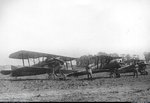


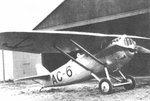
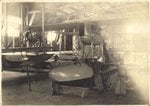

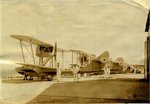

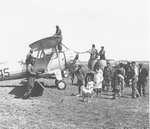







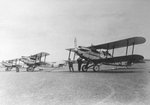
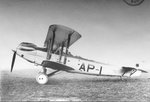



![FAIREY III (6)[2].jpg](/forum/data/attachments/148/148759-07a069f5125609a2d41e5e391c5f58f0.jpg)
